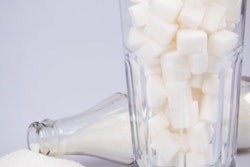
The rate of caries in primary teeth and extractions due to caries were significantly lower in a school that banned sugary drinks compared with similar neighboring schools without this policy, according to a study in the Journal of Paediatrics and Child Health (January 10, 2017).
After a school in New Zealand enacted a policy that banned sugary drinks and encouraged children to bring healthy lunches, the principal reported vast improvements in health, behavior, and absentee rates of the children.
"School nutrition policies, particularly those that seek to restrict sugar intake, can have marked positive effects on the oral health of students, and are likely to reduce healthcare costs associated with the treatment of dental caries," concluded the study authors, who are all based in Auckland, New Zealand.
The lead author was Simon Thornley, MBChB, PhD, MPH, an epidemiologist at the Auckland Regional Public Health Service and a public health physician at the Counties Manukau District Health Board.
Does good nutrition begin at school?
In recent decades, government regulations have enforced and then repealed guidelines related to nutrition in schools in New Zealand, and uncertainty remains about the value of school nutrition policies, the authors wrote. Currently, there are no mandatory food and beverage standards for schools in the country, although some schools have created nutrition programs to promote better health in their students.
“School nutrition policies, particularly those that seek to restrict sugar intake, can have marked positive effects on the oral health of students.”
One such school is Yendarra School, a primary school in Otara, a suburb of Auckland. The school is located in a socioeconomically challenged area with almost 80% of students of Pacific ethnicity. Children of Pacific and Maori background are known to have higher rates of caries than children of other ethnic groups in Auckland, according to the authors.
In 2007, the school's new principal started a policy allowing only water as a drink on school grounds and provided free water bottles for students. She also encouraged parents to pack healthy lunches for kids that could include salads, sandwiches, fruit, water, and milk.
The principal reported vast improvements in the health, behavior, and absentee rates of the children. However, these factors and any oral health changes had not previously been studied formally, so the study researchers compared the rate of caries at Yendarra with the rates at eight socioeconomically similar schools within 3 km of the school. All the schools in the study were exclusively state-funded.
There are few comparative studies in the literature, and most studies on preventing dental caries in schools focus on dental hygiene and fluoride therapies rather than restricting sugar intake, the study authors noted.
The researchers obtained dental records from the Auckland Regional Dental Service for all students ages 8 through 11 from between 2007 and 2014. The data included both primary and permanent teeth. The researchers selected this age range so that the students had more time than younger children to be exposed to the school environment.
The analysis included dental records from more than 3,800 children, of whom 428 attended Yendarra and 3,385 attending surrounding schools. While there were few sociodemographic differences between the students at Yendarra and the other schools, the mean number of caries (as measured by decayed, missing, and filled primary teeth [DMFT]) was significantly lower in Yendarra students compared with students of other schools (2.50 versus 2.91; p = 0.018).
Additionally, Yendarra students had undergone half the number of extractions because of caries compared with the other students (p = 0.003), although the number of DMFT was not significantly different in permanent teeth.
| Differences in caries rates between Yendarra and nearby schools | |||
| Yendarra | Other nearby primary schools | p-value | |
| Primary teeth | |||
| Decay mean | 0.91 | 1.03 | 0.093 |
| Missing | 0.14 | 0.27 | 0.003 |
| Filled | 1.44 | 1.61 | 0.172 |
| Total DMFT | 2.50 | 2.91 | 0.018 |
| Permanent teeth | |||
| DMFT mean | 0.50 | 0.55 | 0.320 |
| Total caries in all teeth | 3.00 | 3.47 | 0.002 |
The researchers estimated that the Yendarra School nutrition policy prevented 20 carious teeth per year in its students. If this association was causal, enacting the policy in the other schools would have prevented another 156 carious teeth annually, the study authors wrote.
Their results suggested that Yendarra's nutrition policy prevented about one tooth from developing caries for every three students, and levels of caries were lower than in the other schools.
"This analysis suggests the need for a more systematic and widespread policy which limits the availability and sale of sugary food and drink in schools," the authors wrote.
Saying no to sugar
The authors noted that the study is limited by the available data. There may be differences in the way that caries are measured between dental therapists at the various schools, but that this is unlikely to affect the results in favor of a positive effect of the Yendarra policy, they wrote.
However, because there is a high level of student turnover at the school (around 30% annually), the estimated beneficial effect of the nutrition policy is likely underestimated, they added.
"This nutrition policy, implemented in a school in the poorest region of South Auckland, which restricted sugary food and drink availability, was associated with a marked positive effect on the oral health of students, compared to students in surrounding schools," the authors concluded. "We recommend that such policies are a useful means of improving child oral health."



















